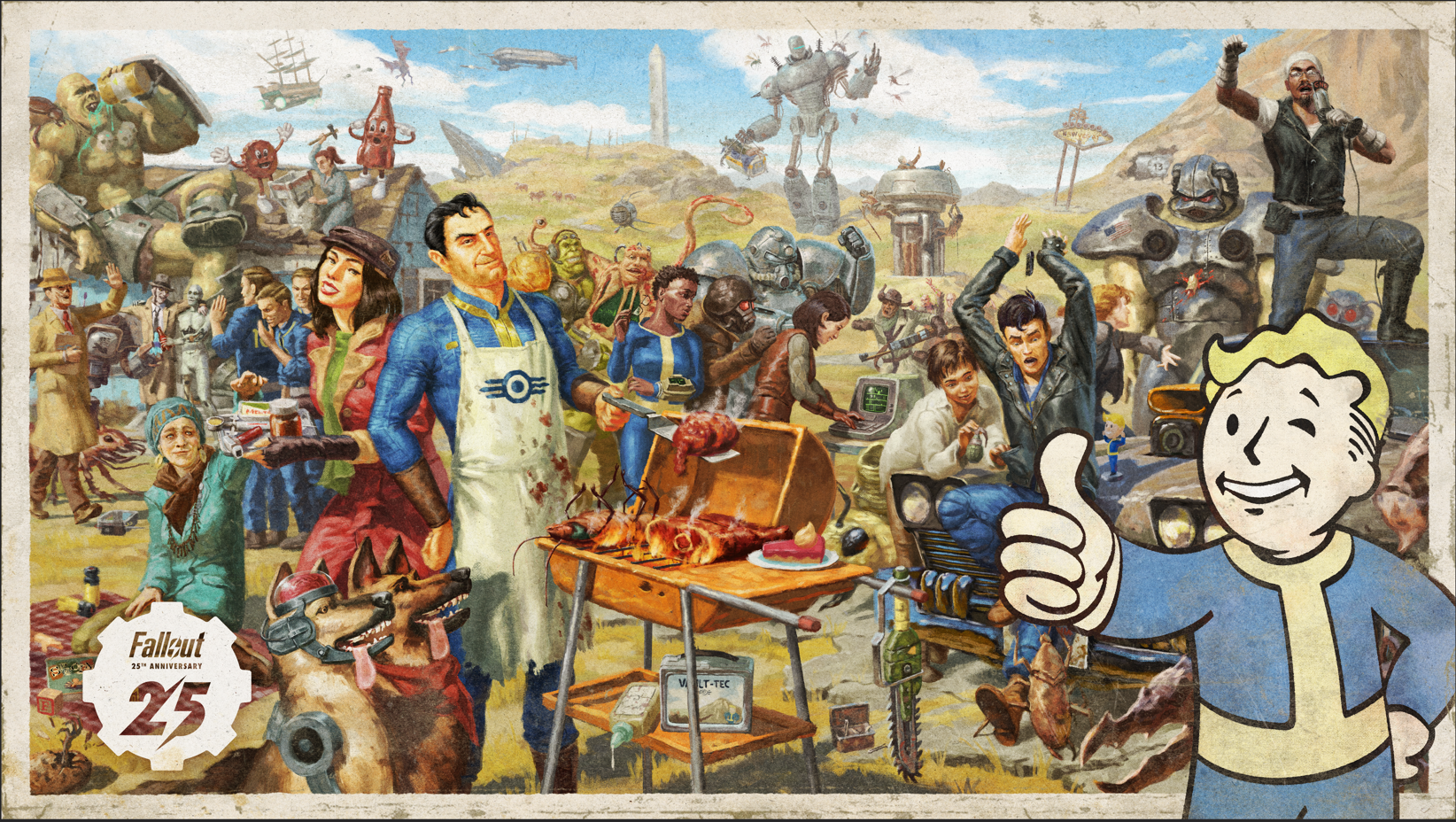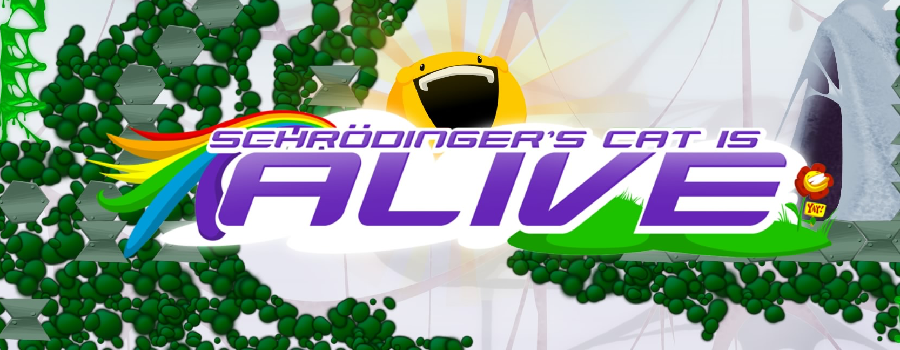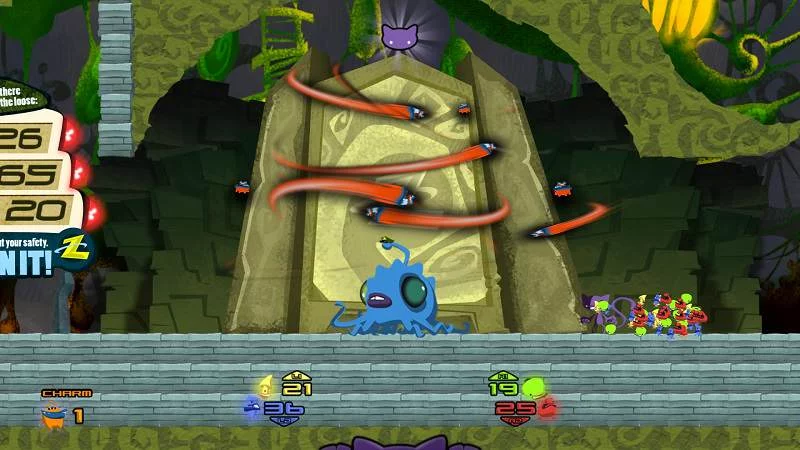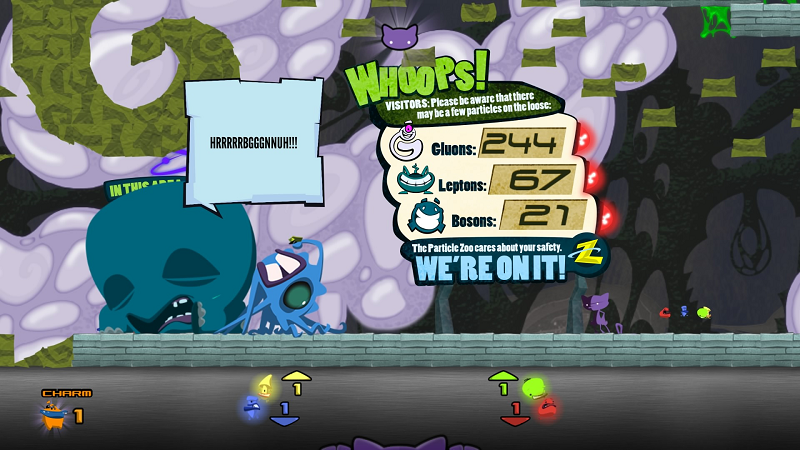When it comes to themes in gaming, advanced particle physics is not exactly the most common narrative thread. Vengeance, apocalypse, princess-rescuing – they’ve all been done to death. Thankfully, Schrödinger’s Cat and the Raiders of the Lost Quark really steps up and gives us the subatomic story we’ve all been hoping for.
The game sets the scene in the ‘Particle Zoo’, an enclosure that houses a (comparatively) huge display of the subatomic elements that make up our world. When a catastrophe unleashes the various inhabitants of the zoo, the zookeepers call on the only hero they know who’s up to the task – Schrödinger’s Cat.
For those not in the know, the theory of Schrödinger’s Cat is this: a physicist named Erwin Schrödinger proposed a theoretical experiment in the field of quantum mechanics. His experiment stated that you place a cat in a sealed box with a vial of poison, and a mechanism that could crack it open with the right trigger. If the vial breaks and the poison is released, the cat dies.
The trick is that you can’t know whether the cat is alive or dead until you open the box, and as such – according to quantum law – the cat is in a ‘superposition’, both alive AND dead until it’s observed and its quantum state stabilises. It’s heady stuff to base a game around, I know. But developer Italic Pig have a different suggestion about this feline’s condition; until he’s observed, Schrödinger’s Cat shrinks down to the subatomic level to round up particles and rescue a teeny-tiny zoo.
The Schrödinger’s Cat theory is woven into the gameplay quite cleverly. The Cat has a health bar that depicts his superposition, shifting from ALIVE to DEAD as he takes damage. If he does reach a 100% DEAD state, a disclaimer appears on screen saying as much – only to be immediately replaced by one saying he is ALIVE. This is the game’s way of resetting the level and restoring the Cat to a checkpoint.
As well as his powers of superpositioning, the Cat gains the ability to utilise quarks – the smallest known components of matter – as a kind of mix-and-match power-up. Using four of the six types, or ‘flavours’ of quark, the Cat can create combinations of three quarks to perform a variety of functions. Three up quarks will form a helicopter to lift him up, three down quarks will create a drill to punch through platforms.
Trios of top quarks form a protective barrier for the Cat to roll around in, and three bottom quarks create a temporary platform for him to climb on. Different combinations of the flavours will produce new results, with 14 total combinations possible in the game. It’s a lot to take in at first, but over time the process becomes more familiar and instinctive.
Beyond its unique physics-based gameplay, Schrödinger’s Cat is a traditional platformer at its core. Much of the levels are destructible using your quarks, but as a result the level design can feel a little blocky and rough. You’ll find enemies scattered throughout each level, and one of your primary goals is to collect them all up to return to the zoo.
Each level features a tally board to let you know how many enemies remain, a mechanic reminiscent of Abe’s Oddysee and its Mudokon employee counts. Capturing your enemies – all themed on other particle components – is an ever-present goal, but it can get a bit tiring. Knowing that there are hundreds of Gluons, Leptons and Bosons left to trap can feel a bit daunting, but also works to help you gauge the progress you’ve made. It’s a fine line, and the mechanic will no doubt appeal to some while making others feel pressured to 100% every area before moving on.
All in all this is a solid platformer and collect-a-thon. The graphical style is distinct, though the construction of the levels feel like they could benefit from a bit more polish. The grounding in physics for the game’s story and gameplay are unique, and helped me feel more invested based on my limited knowledge of particle physics. There’s plenty of referential humour at work in the game (most of which no doubt went over my head), and the goofy jokes that fill in the gaps keep it from seeming too high-brow. While it may not be breaking any new ground overall, it’s definitely tackling that existing ground from a fresh angle.
Schrödinger’s Cat and the Raiders of the Lost Quark was reviewed using a promotional code on PS4, as provided by the publisher.
Review: Schrödinger’s Cat and the Raiders of the Lost Quark
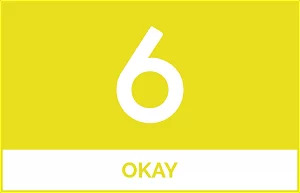 |
|
The good
|
The bad
|
Want to know more about our scoring scale?
This article may contain affiliate links, meaning we could earn a small commission if you click-through and make a purchase. Stevivor is an independent outlet and our journalism is in no way influenced by any advertiser or commercial initiative.


